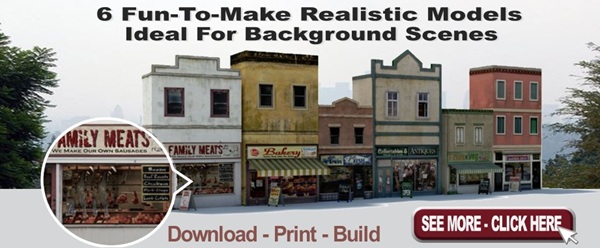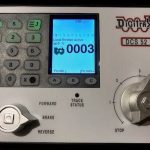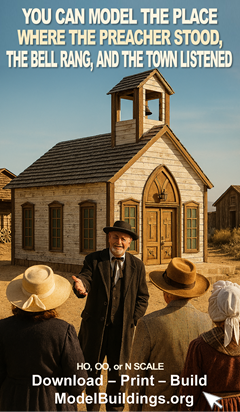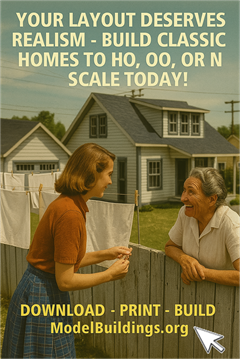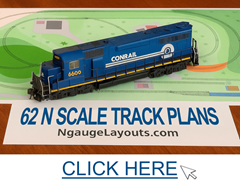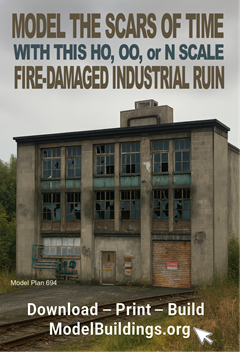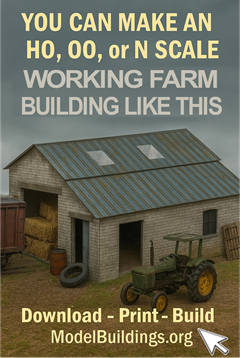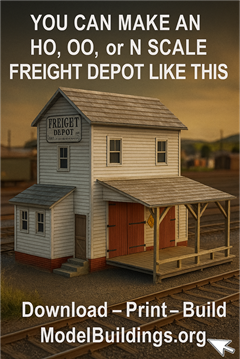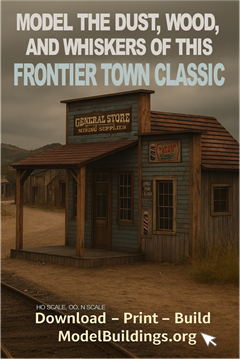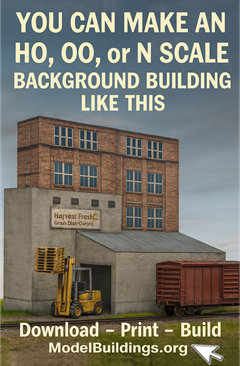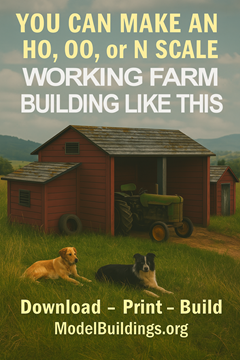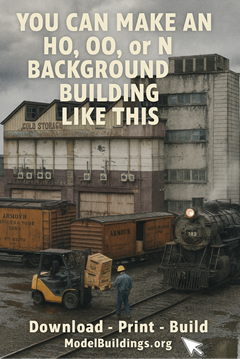Everything on model trains, model railroads, model railways, locomotives, model train layouts, scenery, wiring, DCC and more. Enjoy the world's best hobby... model railroading!
The Little Engine That Could – I think I can. I think I can. I think I can. I know I can.
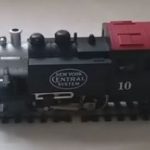 In the spirit of Watty Piper, author of “The Little Engine That Could”, Ron submitted this question:
In the spirit of Watty Piper, author of “The Little Engine That Could”, Ron submitted this question:
“I have a charming little engine that I’m sure I can hear puffing out ‘I think I can, I know I can’. I get the feeling it wants to grow into a DCC engine, and I would like that too! My little switcher is an 040 by Model Power. It was cheap to buy (no offense little engine), so I am uncertain if it can ever become DCC? Can someone say yes or explain how I am to break the bad news to my little engine if it can’t ever become DCC? Please help!!!”
Engine Direction DCC
Malcolm writes:
“I just spotted Peter’s question about lights with his dcs52 control. I also have a dcs52 but my new Bachmann engine is running opposite to how the throttle is set. Why would this be the case? Thank you.”
If you can advise Malcolm, please use the comments link.
Don’t forget to post your own questions using the Ask A Question link.
Using Digitrax DCS52 Controller
Peter asks:
“Can someone please tell me what is the cv to turn train head lights on using a Digitrax dcs52 controller?”
Problems With Genesis Big Boy Locomotive
Douglas asks readers for help:
“I’ve been a model railroader for over 65 years. However, I’ve run into a problem that I cant solve. My Genesis Big Boy will not reprogram. Are you aware of how or where I can program an NCE powercab for this loco?”
Comparing Peco Track With Hornby Track
Andrew is new to OO and posted this question:
“I am a beginner. I have been told to buy Peco track. What are the advantages of Peco or Hornby track and what can you advise me to buy?”
If you can offer Andrew some words of wisdom, please do.
HOn3 Comparison With HO
Rick asks:
“Can HO rolling stock trucks be switched out to N scale trucks to accommodate HOn3 style modeling on narrow gauge track? Does a HOn3 engine look proportional with HO rolling stock? If HO rolling stock trucks can be switched to accommodate HOn3 for narrow gauge track would the rolling stock be too long for the smaller radius turns? Is there a special size truck that can be used for this application?”
You can add your comments below.
Locos Traction Wheels
Ricardo from Buenos Aires, Argentina writes:
“Dear folks my first train set has been Marklin and eventually came over to DC. Don’t know why but since the year dot Marklin added 2 rubber bands to locos traction wheels to improve adherence. Well, if they were stripped of the rubber bands, how would the ride? How many cars could they move?”
Solving Point Problem When Running Switcher Locos
Hugh asks readers:
“I have a Peco electrofrog point and run my 3 large locos ok. The problem is when I run my 2 small switcher engines that pass over the point (frog end) they briefly stall before moving on. It only happens in one direction so I’m a bit baffled. Help please.”
Use the COMMENTS link under this post to add your suggestion(s) and view the answers. Use the ASK A QUESTION link to submit your own question for publication.
What Would Be Your Pick Of Model Train Locomotives?
I thought it might be fun and enlightening to hear some opinions and preferences from our blog readers.
So…
Imagine if you could operate only one locomotive on your layout. What make and model would it be, and why?
Tell others about your favorite loco by adding a comment below.
Solving and Avoiding Stripped Screw Threads In Plastics
Allen J writes:
“Does anyone know how to fix stripped screw threads in plastics? I have been disassembling then re-assembling things and some screws are not gripping the plastic. I thought I was being careful re-inserting the screws into existing holes, but obviously not. I can’t be the only one with this problem?”
NEW! C.K. Edwards Auto Industries Background Building. Featured in the New Model Buildings Catalog Version 8.0 – Download Your Copy Now.
Version 8.0 of the Model Buildings Catalog is now available for download here https://www.modelbuildings.org/catalog
The C.K. Edwards Auto Industries building is one of 6 new plans just released See More Here
3 Engineers and 3 Accountants…. Clever Thinking!
We don’t usually post jokes, but because it’s Christmas how about this one sent in by Ryan:
Three accountants and three engineers were traveling by train to the same conference. On arrival at the station, each of the three accountants bought a ticket. With some bewilderment the accountants noticed the three engineers purchased only a single ticket. “How can three passengers travel on a single ticket?” asked one of the accountants. “Observe and you’ll see,” replied one of the engineers.
 All six boarded the train. The three accountants took their seats, however, the three engineers crammed together inside a small restroom and locked the door behind them. Not long after the train had departed, the conductor started collecting tickets. The accountants watched as he knocked on the restroom door saying, “Ticket, please.” The door edged open a fraction and a single-arm poked out with a ticket in hand. The train conductor took it and moved on.
All six boarded the train. The three accountants took their seats, however, the three engineers crammed together inside a small restroom and locked the door behind them. Not long after the train had departed, the conductor started collecting tickets. The accountants watched as he knocked on the restroom door saying, “Ticket, please.” The door edged open a fraction and a single-arm poked out with a ticket in hand. The train conductor took it and moved on.
After witnessing this, the three accountants agreed it was a cunning trick. So, on their return trip from the conference, the accountants decided to pull the same ruse and save some money… accountants are generally considered to be astute (even frugal) when it comes to money. Arriving at the station, they purchased just one ticket for their return trip. To their amazement, none of the three engineers bought a ticket. “How do you expect to travel without a ticket?” said one of the puzzled accountants. “Observe and you’ll see,” replied an engineer.
After boarding the train, the three accountants made for the restroom and crammed inside. The three engineers squeezed into another restroom nearby. The train soon departed, and it wasn’t long before one of the engineers left their restroom and walked across to the other restroom where the three accountants were hiding. The engineer knocked on the door and said in an authoritative voice, “Ticket, please.”
Turning Off LED Coach Lights When Train is Sitting at a Siding or Station – How?
Russell posted this question:
“I figured how to instal an LED strip light in a passenger coach and power it from the rails on my DCC layout without using a decoder, but I can’t figure how to turn the lights off without taking the coach off the rails or using an isolated track section. I thought this would be a handy detail when the coaches are stationed at a platform or on a siding waiting to be put into use, but am not sure how to achieve this. Have you done this? How?”
Woodland Scenics TT4560 Tidy Track Roto Wheel Cleaner Feedback
“I am thinking of getting a Woodland Scenics TT4560 tidy track roto engine wheel cleaner HO version and would like feedback on how efficient they are. My understanding is you put your engine on this device and it cleans the wheels. Sounds easy, but what happens when the engine is tender driven with the tender having rubber wheels? I’m just not sure how this would work?”
HOT! Plans For This Impressively Realistic “Advance Rail Manufacturing” Background Building Now Available To Build In HO, OO, or N Scale
You can download your copy of the latest UPDATED catalog showing all the new releases here https://www.modelbuildings.org/catalog
Download plans for these 6 new backdrop industrial buildings at See More Details Here
JUST RELEASED! Now Available – Plans For 6 “Impressively Realistic” Scale Model Background Yard Buildings
Watch step-by-step how this J.C. Walsh & Sons Engineering Co. building was constructed using corflute/foamboard and cardboard.
Plans for these 6 new background industry buildings are available now See More Details Here
Gift Cards Proving Popular
 If you want to drop a hint to a family member on what they can get you for Christmas, then a Model Buildings Gift Card is a good option. They can nominate the value, and you can select which plans you want to download. Easy!
If you want to drop a hint to a family member on what they can get you for Christmas, then a Model Buildings Gift Card is a good option. They can nominate the value, and you can select which plans you want to download. Easy!
https://www.modelbuildings.org/gift-certificate
DCC Locomotive Problem
Shirish writes:
“I am fresh to this hobby. I bought an InterMountain Railway Co. Loco SD40-2(W). When I run this loco with any other loco, the other loco even when on the siding or stationed on the main, it starts running in reverse without any command. Plus, when both are running on the same track, the other loco stops and then starts running at full speed. Can someone suggest a solution to the problem?”
